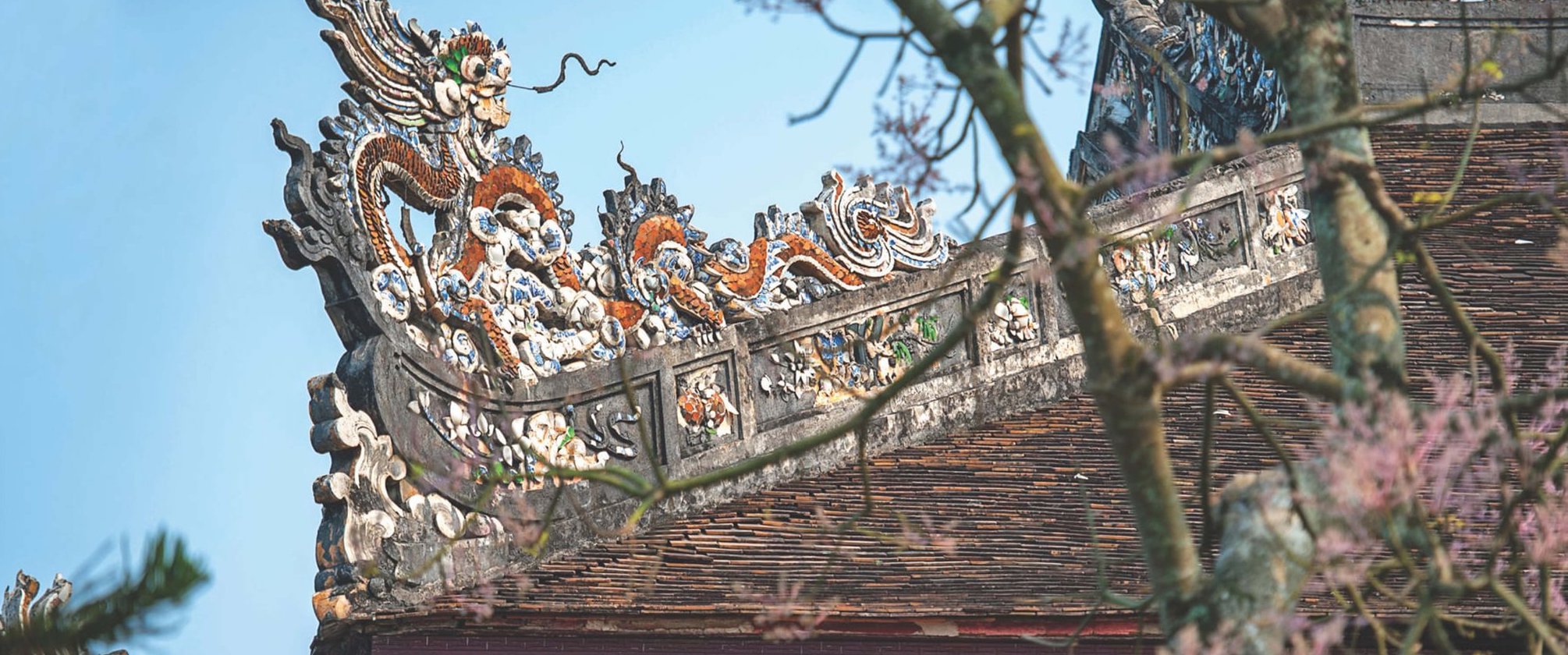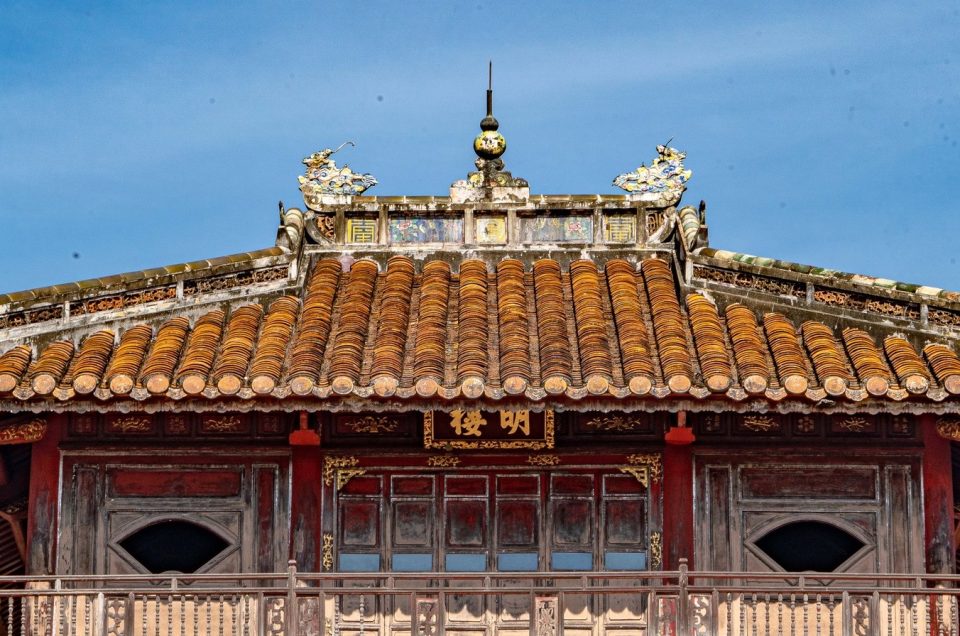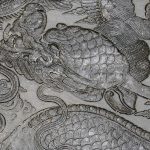Hue’s Documentary Heritage
Hue is known as a city with multiple World Heritages recognized by UNESCO. The Complex of Hue Monuments was acknowledged as a “World Cultural Heritage” in 1993, and Hue’s Court Music as an “Intangible Cultural Heritage of Humanity” in 2003. To date, most people remain unaware that Hue also possesses another one-of-a-kind type of Heritage: classified as Royal literature on Hue royal architecture This “Documentary Heritage” was inscribed on the UNESCO regional Memory of the World Register in May 2016. Hue is the only city in Vietnam and Southeast Asia that boasts all three types of Heritage recognized by UNESCO, namely “Tangible Heritage”, “Intangible Heritage”, and “Documentary Heritage”.

Royal literature on Hue royal architecture is a collection of key poems and literary works written in Han (traditional Chinese characters), which were selected from works penned by Nguyen Dynasty emperors, princes, and mandarins. These quotes were carved, chiseled, encrusted, engraved, enameled, or embossed onto royal buildings in the Hue Citadel from 1802-1945 CE. This “Documentary Heritage” includes thousands of poems, couplets, and other literary works written on royal buildings using different materials, such as wood, ivory, bone, mother-of-pearl, painted enamel, and porcelain mosaics. This is a typical form of ornamentation in Hue.

Most of the works that comprise this collection of Literature on the Architecture of the Hue Imperial Citadel take the form of “one poem-one painting” – meaning that each panel of verse is linked to a panel of painting, creating a distinctive decorative style that is typical of Hue’s traditions. Despite the passage of time and the ravages of warfare, natural disasters and human impacts, the ancient capital of Hue still preserves a significant amount of this unique wealth of poetry and literature, most of it created from three main materials. Researchers have catalogued 2,967 panels of poetry on wood; 146 panels of verse on painted enamel; and 88 panels of verse on modern materials like concrete and bricks.

Regarding the contents, literary works written in Han characters on royal architecture contain distinctive and irreplaceable values. Located within the Complex of Hue Monuments, all of these works are unique. They form the most authentic and accurate historical sources that reflect the ideology of an era, giving us a view into the perspectives and philosophies of emperors, princes, mandarins, and other nobles. The talents of that era’s poets are demonstrated through poems that cover many topics, including landscapes, people, nature, and the seasons. In addition, these one-off literary works give us valuable information that contributes to the study of politics, culture, society, and people during that period in the nation’s history.

From an aesthetic perspective, these valuable works of decorative arts served as handcrafted prototypes for other artworks. They reveal the talents and souls of long-ago artisans. This decorative style made a strong mark in the history of Vietnam’s architecture. These works constitute a collection of diverse paintings and calligraphy and are meaningful for Vietnamese and Southeast Asian cultures.






